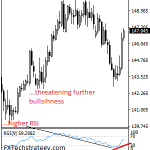The other day I was in my local branch of a Too Big To Fail bank where I have a few accounts. One of them is a savings account in which I keep some of my “dry powder” cash stored.
It had been a while since I had checked what kind of return the savings account offered. I knew it was pretty low, but there have been a few Fed rate hikes since the last time I had checked. So I asked the teller to look up the current rate the account was yielding.
Any guesses?
It’s 0.06%.
Not 0.6%. And definitely not the 6% I remember receiving when I was a teenager. 0.06%.
As in, put $100,000 into your savings account and get back a whopping $60 per year.
Are you kidding me? $60 to have a hundred grand parked in an account subject to withdrawal restrictions and penalties, along with the usual smattering of administrative fees both overt and hidden? At a bank that stumbled mightily during the Great Financial Crisis? One with the potential to legally confiscate your savings through a “bail in” should another crisis hit?
Oh, and if you factor in the government’s trailing 12-month inflation rate of 2.2%, your “savings” account has a negative (-2.14%) real rate of return. Your compounded savings actually loses purchasing power over time. And as we all know the official inflation rate is farcically understated, your loss of purchasing power is even more dire than it at first appears.
“Thank” The Fed
Savings accounts were created to provide an incentive for people to plan for the future. Put money away today, let it grow through the miracle of compounding interest, and have more tomorrow.
Prudent savings is essential to a healthy economy. It offers resilience during downturns, and provides seed capital for productive enterprise.
But we are no longer a nation of savers. Not only does our culture indoctrinate us to spend and consume — and makes it possible to do so by spending future prosperity today through the use of debt (the very opposite of saving) — but the Federal Reserve has very intentionally driven down interest rates to historic lows.
To show just how far, let’s take a look at historic interest rates savers have enjoyed over the past few decades.














Leave A Comment